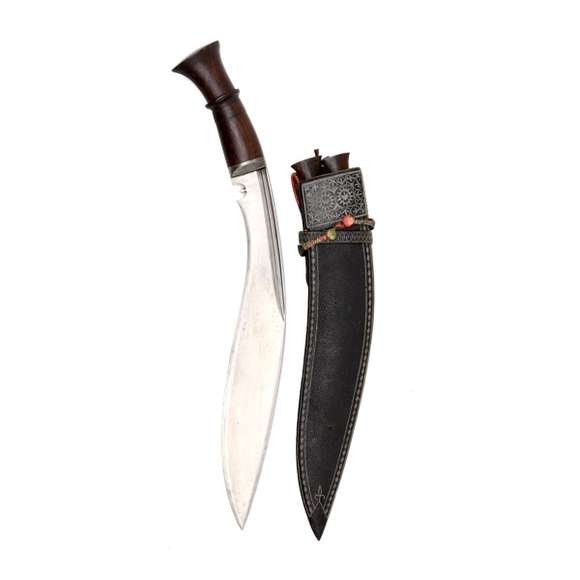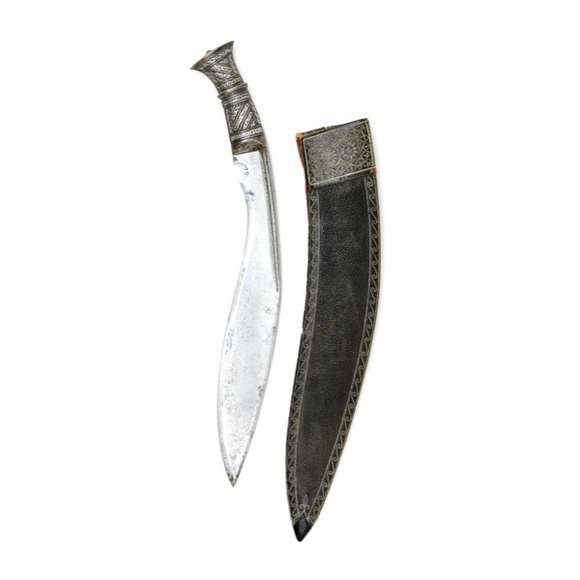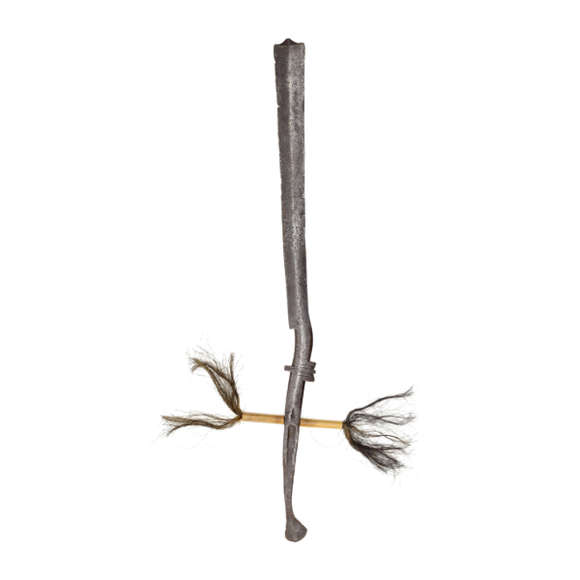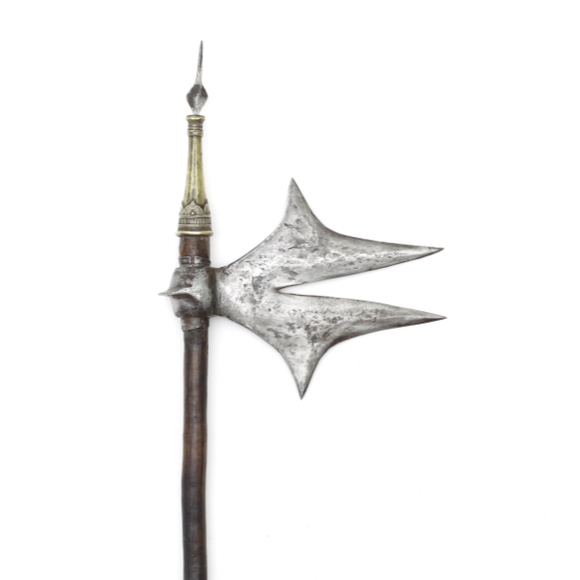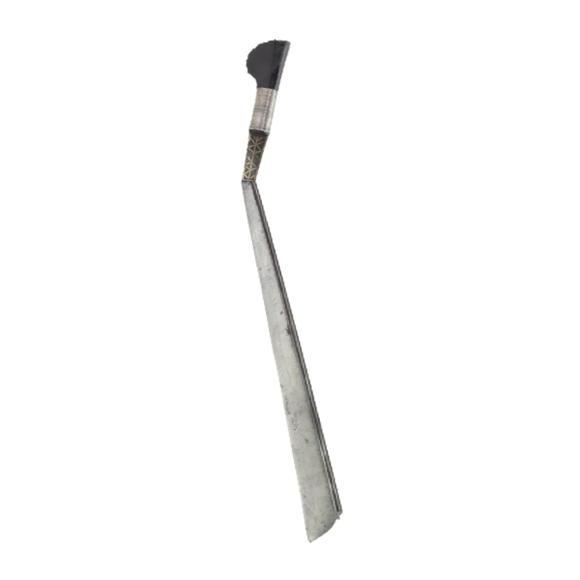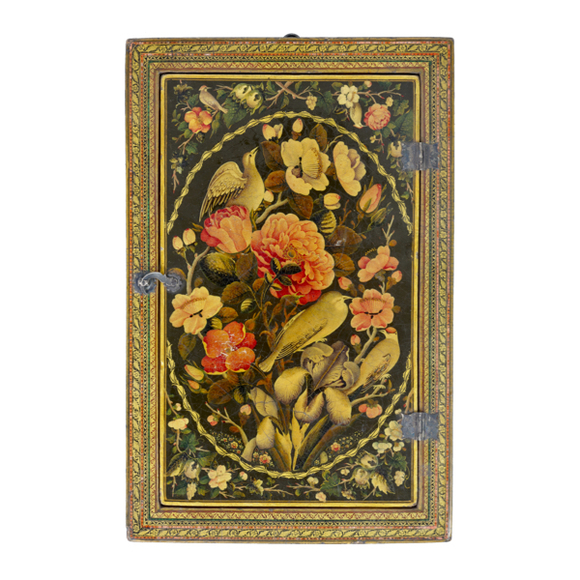Language: Ainu
Source: John Batchelor; An Ainu-English-Japanese dictionary. 1905
Description
Kuttom-ushbe appears in John Batchelor's 1905 Ainu dictionary as:
"A long knife worn in the belt"
The typical knife carried by virtually all Ainu was the makiri, a small utility knife that was won suspended from the belt, attached by means of a string and toggle.
The extant Ainu weapons that fit Batchelor's description bear resemblance to the Japanese tantō, including having a loop on the scabbard that the Japanese call kurigata. It is used for attaching the sageo, a strap that in turn attaches the scabbard to the belt, so it doesn't come along during a quick draw.
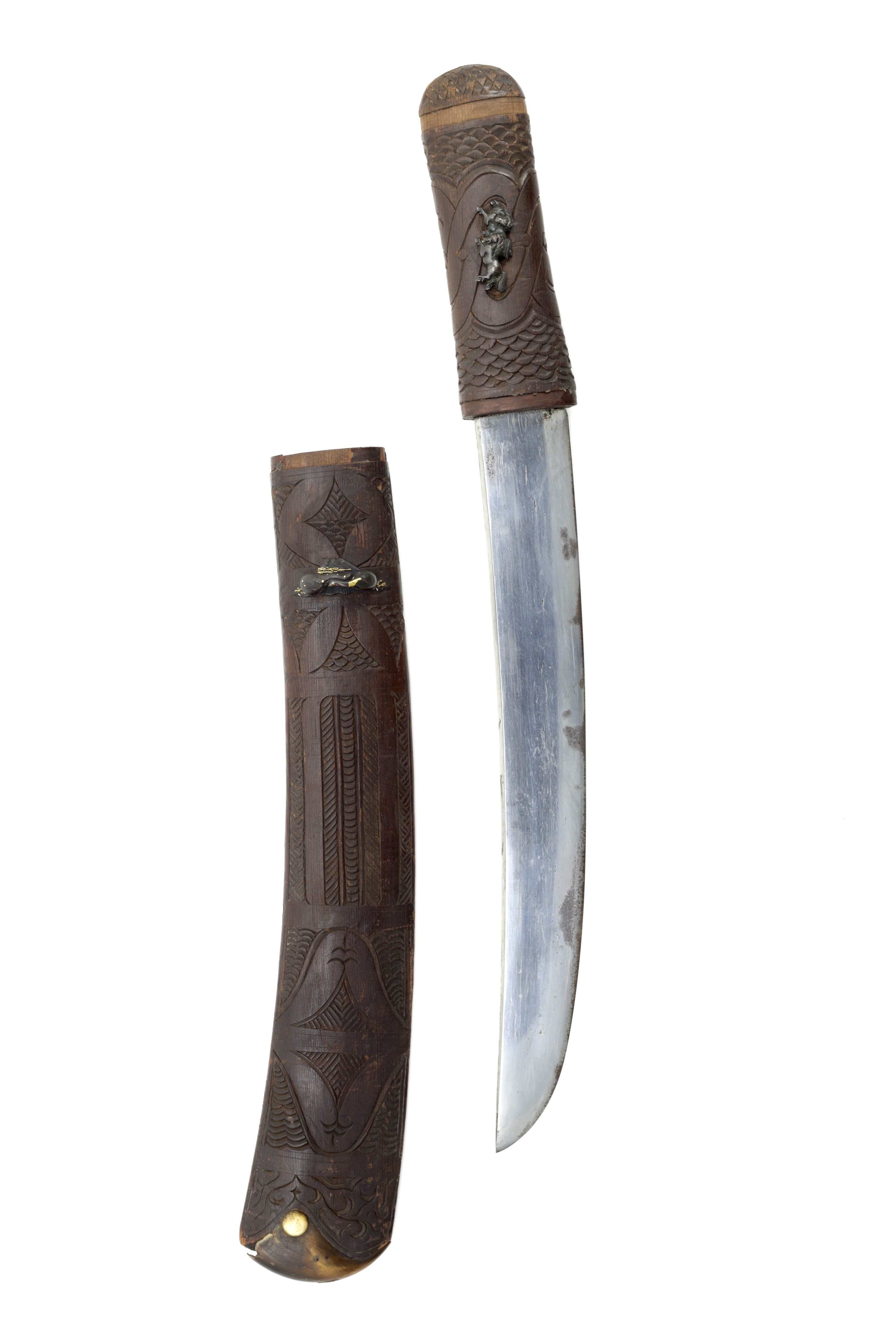
An Ainu kuttom-ushbe.
Mandarin Mansion inventory 2022.
A larger, o-tantō sized piece is in the Minneapolis Institute of Art. It has an associated sword sash that I think came from a full-sized Ainu sword. This piece was likely also meant to be carried in a belt, as suggested by the presence of a kurigata like on our piece. Accession number: 2019.20.11a, b.

